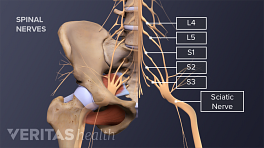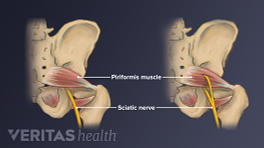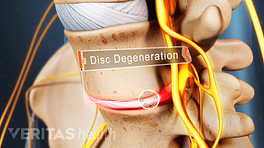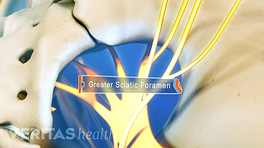Sciatic nerve pain affects millions of people, and it can range from a minor nuisance to a debilitating problem. Despite its pervasiveness, there is still a lot of confusion surrounding the topic.
To help get you up to speed, here is what you need to know about both the anatomy of your sciatic nerve and the pain associated with it.
What is your sciatic nerve?
Your sciatic nerve is the longest and largest nerve in your entire body—measuring roughly the width of a man's thumb at its largest point.
The sciatic nerve begins as a bundle of nerve fibers, also called the nerve roots, in your lower spine, these nerve fibers exit through holes in the bones at the back of your spine. Your sciatic nerve is comprised of five total nerve roots, two of which come from the lumbar region of your spine—while the other three are from your sacral spine region.
Your five nerve roots bundle together near your piriformis muscle, and the nerve then travels down the back of your leg. When your sciatic nerve reaches your knee, it divides into two separate nerves— the tibial and the common peroneal nerve. The peroneal nerve travels sideways along the outer part of your knee and then down to your upper foot, while the tibial nerve travels downwards towards your heel and the sole of your foot.
Why does your sciatic nerve hurt so much?
The first thing to know about pain associated with your sciatic nerve roots—commonly referred to as sciatica—is that sciatica is not a medical diagnosis. Rather, sciatica is a symptom of an underlying medical disorder. Sciatica refers not only to symptoms of pain, but also to numbness or weakness felt along your sciatic nerve. Here is a list of some of the most common underlying medical disorders that cause sciatic pain.
Degenerative disc disease. Degenerative disc disease can cause the inflammatory proteins contained inside your spinal discs to leak onto your nerve roots, which in turn may lead to sciatica symptoms.
Isthmic spondylolisthesis. Isthmic spondylolisthesis occurs when a stress fracture allows one vertebral body to slip forward onto another. This may result in the pinching of a sciatic nerve root.
Piriformis syndrome. Your sciatic nerve may be irritated as a result of piriformis syndrome, or the spasming of your piriformis muscle. Strictly speaking, sciatic nerve pain caused by piriformis syndrome is not classified as sciatica.
Sciatica symptoms are typically felt on only one half of your body, and, depending on where your sciatic nerve roots are compressed, your symptoms may be felt in different parts of your leg or foot.
I hope this information helps you better understand both the anatomy of your sciatic nerve and your sciatic nerve pain. Thanks for watching and stay healthy.










